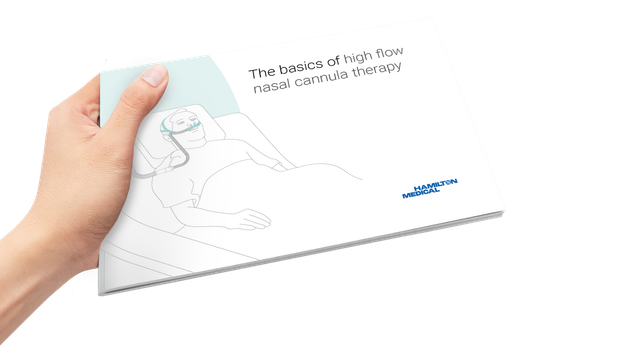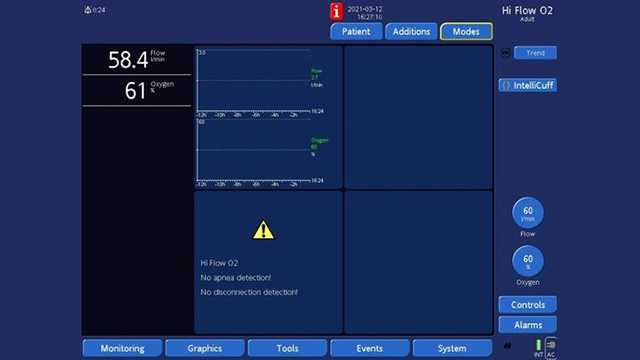
作者: Caroline Brown
日期: 16.10.2020
Last change: 06.10.2020
First published: 16.07.2020 ROX (values) at 12 hours after HFNC initiation (previously: intubation) were predictors of HFNC failure.The coronavirus pandemic has stretched many hospitals’ resources to the limit. Patients are requiring respiratory support on an unprecedented scale and a possible – or in some cases very real – shortage of ventilators is forcing institutions to weigh up the risks and benefits of alternative forms of therapy.

On the one hand, evidence on the use of oxygen delivered by high flow nasal cannula (HFNC) in patients with acute hypoxemic respiratory failure (AHRF) has demonstrated its superiority to standard oxygen therapy by facemask in many respects, including better tolerance, and improved oxygenation and work of breathing (
There are several mechanisms of action for HFNC that translate into a range of benefits, including greater patient comfort (
The ROX index is defined as the ratio of SpO2 (oxygen saturation as measured by pulse oximetry)/FiO2 (fraction of inspired oxygen) to the respiratory rate. SpO2/FiO2 has been shown to have a positive association with the success of HNFC, while RR has an inverse association. In their results published in 2016, Roca et al. concluded that the ROX index, which combined both parameters, could successfully be used to identify patients who were at low risk of HFNC failure and could therefore continue to receive HFNC after 12 hours (
Based on previous data from patients with AHRF treated with HFNC, which showed that the set flow rate has a significant effect on oxygenation and RR (
On top of the limitations of previous studies, concerns have been expressed about the relationship between the SpO2/FiO2 ratio and the PaO2 (partial pressure of arterial oxygen)/FiO2 ratio that may not always be so linear (
The ROX index is an accurate, simple-to-use tool for any staff member at the bedside. As such, it could potentially be measured routinely in those patients undergoing HFNC. Further research will shed light on the feasibility and usefulness of using the ROX index in combination with traditional criteria for determining whether intubation is necessary.
Ventilators from Hamilton Medical offer high flow oxygen therapy as a standard or optional feature, in addition to continuous SpO2 and SpO2/FiO2 measurement (
It's also available on our standalone high flow oxygen therapy device, the HAMILTON-HF90 (


我们的高流量鼻导管治疗电子书向您概述了工作原理和临床获益,以及有关选择正确连接界面、调整设置和监测病人的实用信息。

Everything healthcare professionals need to know to get started with high flow nasal cannula therapy: the flow rate, FiO2 settings, when to use HFNC, selecting the interface, and much more.

High flow therapy (HFT) has been used widely during the COVID-19 pandemic. Published clinical experience is based mainly on retrospective studies and describes the main settings and the failure rate.